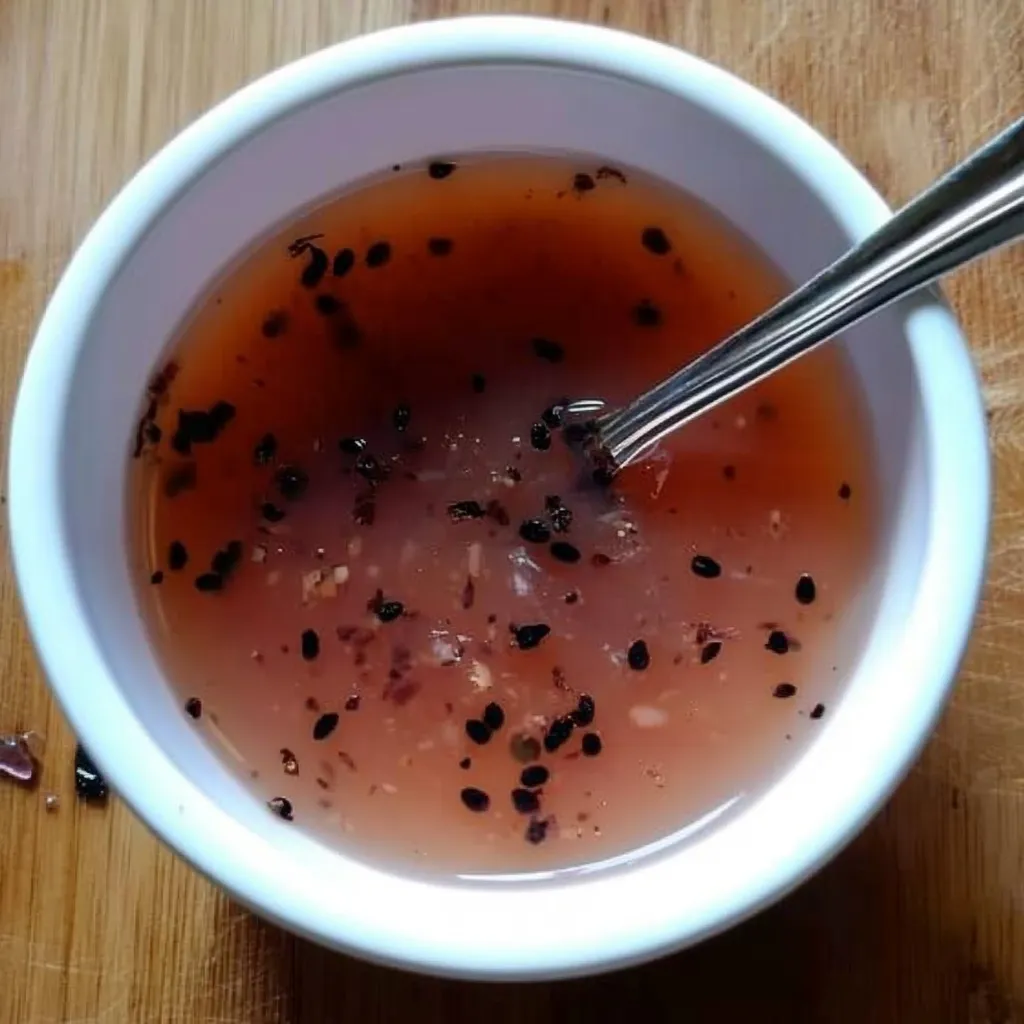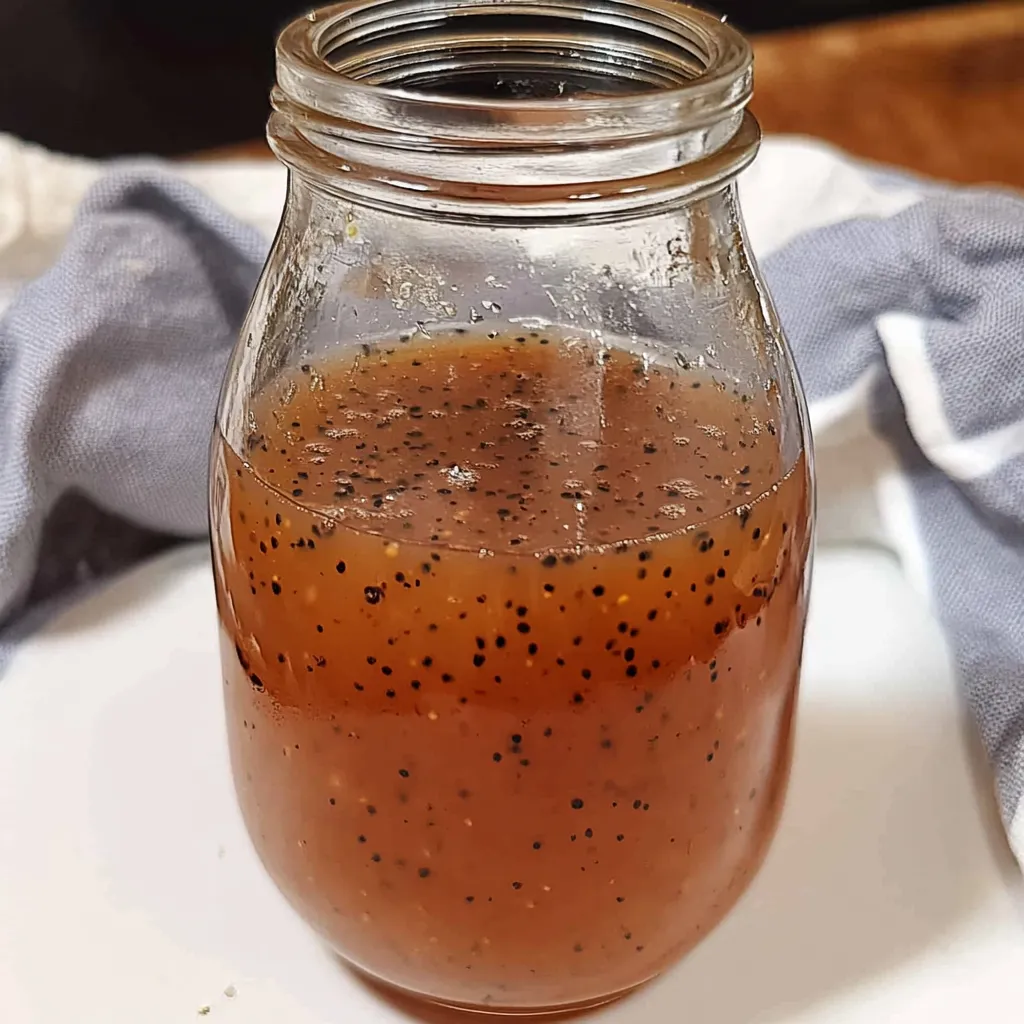 Pin it
Pin it
This exceptional homemade Subway sweet onion sauce captures the beloved restaurant's signature sweet-tangy flavor profile perfectly, delivering that distinctive taste that makes their sandwiches so addictive in a recipe you can make from scratch in just 15 minutes with simple pantry ingredients. The genius of this copycat version lies in its clever technique of extracting pure onion juice through blending and straining, then simmering it with carefully balanced vinegars and spices to create that glossy, perfectly thickened consistency that clings beautifully to sandwiches while providing the exact sweet-tangy punch that makes Subway's version so irresistible. Unlike store-bought condiments loaded with preservatives and artificial flavors, this homemade version uses fresh ingredients to create clean, bright flavors that taste remarkably authentic while being completely customizable to your taste preferences and dietary needs.
I perfected this recipe through careful analysis of Subway's sauce and multiple testing rounds, with the breakthrough coming when I realized that extracting pure onion juice rather than using chopped onions was the key to achieving that distinctive smooth consistency and concentrated flavor that defines the restaurant version.
Essential Ingredients and Selection Tips
- Sweet onions: Vidalia, Walla Walla, or Maui varieties provide the best flavor base, though white or yellow onions work adequately if sweet varieties aren't available
- Fresh garlic: Just a small amount enhances the overall flavor complexity; garlic powder can substitute but fresh provides superior taste
- Quality vinegars: Both white distilled and balsamic vinegar create the characteristic sweet-tangy balance that defines this sauce
- Granulated sugar: Provides essential sweetness; brown sugar can substitute for slightly deeper flavor profile
- Cornstarch: Creates the glossy, clingy consistency that makes this sauce coat sandwiches perfectly; other starches work but cornstarch gives best results
- Nigella seeds: Optional but authentic touch that adds subtle oregano-onion flavor complexity available at Asian markets
The secret to perfect results is proper onion juice extraction and careful temperature control during thickening to achieve restaurant-quality consistency.
Detailed Step-by-Step Instructions
- Step 1: Prepare aromatics properly:
- Peel and roughly chop one medium sweet onion and one small garlic clove for optimal blending efficiency.
- Step 2: Extract onion juice:
- Blend chopped onion and garlic with minimal water until completely smooth, then strain through muslin cloth or fine mesh, pressing pulp to extract maximum liquid.
- Step 3: Heat base mixture:
- In medium saucepan, combine onion juice, water, sugar, salt, white vinegar, balsamic vinegar, black pepper, and nigella seeds if using.
- Step 4: Dissolve sugar completely:
- Bring mixture to boil over medium-high heat, stirring until sugar completely dissolves and flavors begin to meld.
- Step 5: Prepare thickening slurry:
- In small bowl, whisk cornstarch with cold water until completely smooth with no lumps remaining.
- Step 6: Thicken sauce gradually:
- Add cornstarch slurry to boiling mixture while stirring continuously to prevent lumps from forming.
- Step 7: Cook to proper consistency:
- Continue stirring over medium heat for 2-3 minutes until sauce thickens noticeably and develops glossy appearance.
- Step 8: Finish with acid:
- Remove from heat and immediately stir in fresh lemon juice for bright finishing touch that balances sweetness.
- Step 9: Cool properly:
- Allow sauce to reach room temperature, stirring occasionally to prevent skin from forming on surface.
- Step 10: Store correctly:
- Transfer to airtight container and refrigerate for up to one week for optimal freshness and flavor retention.
 Pin it
Pin it
The most important technique is continuous stirring during thickening and proper cooling to achieve restaurant-quality texture and consistency.
This sweet onion sauce has become my proof that understanding restaurant techniques allows home cooks to recreate professional flavors with simple ingredients.
Understanding Onion Juice Extraction and Flavor Concentration
Extracting pure onion juice rather than using chopped onions serves multiple purposes in this recipe. The blending and straining process concentrates the onion's natural sweetness and aromatic compounds while eliminating the fibrous texture that could make the sauce grainy or chunky. This technique also prevents the sulfur compounds in raw onion from overwhelming the delicate balance of sweet and tangy flavors.
Vinegar Balance and Acidity Management
The combination of white distilled vinegar and balsamic vinegar creates complexity that neither could achieve alone. White vinegar provides clean acidity that brightens flavors, while balsamic adds subtle sweetness and depth. This dual-acid approach mimics the layered flavor profile that makes Subway's version so distinctive and prevents the sauce from tasting one-dimensional.
Starch Thickening Science and Consistency Control
Cornstarch creates the ideal consistency for this sauce through gelatinization when heated with liquid. The key is creating a smooth slurry first to prevent lumps, then adding it to the hot mixture while stirring continuously. This technique creates the glossy, clingy texture that allows the sauce to coat sandwich ingredients properly without running off.
Sugar Dissolution and Flavor Integration
Proper sugar dissolution is crucial for both texture and flavor development. Heating the mixture to boiling ensures complete sugar dissolution while allowing the various flavor components to meld into a cohesive taste profile. The dissolved sugar also contributes to the sauce's final consistency and helps balance the acidity from the vinegars.
Temperature Control and Texture Development
Managing heat properly throughout the cooking process prevents the sauce from breaking or developing an unpleasant texture. The initial boiling dissolves sugar and melds flavors, while the medium heat during thickening prevents the cornstarch from clumping or creating a gluey consistency that would ruin the final product.
This Subway sweet onion sauce copycat has taught me that the most successful recipe recreations come from understanding not just what ingredients to use, but how professional kitchens process and combine those ingredients to achieve specific textures and flavor profiles. Every time I make it, I'm reminded that many restaurant "secrets" are actually about technique and timing rather than exotic ingredients, proving that with careful observation and practice, home cooks can recreate virtually any commercial sauce or condiment, often with better quality ingredients and more control over salt, sugar, and preservative content than the original versions.
Frequently Asked Questions
- → How long does this sauce keep in the fridge?
- Store it in an airtight container for up to 2 weeks in the refrigerator. The flavors actually get better after a day or two.
- → Can I use any type of onion for this recipe?
- Sweet onions like Vidalia work best, but regular yellow or white onions will do just fine. The sauce will still taste great.
- → What can I use instead of cornstarch to thicken the sauce?
- Try arrowroot powder, tapioca starch, or potato starch. Use the same amount and mix it with water before adding to the sauce.
- → Is this sauce really like the one from Subway?
- Yes! Many people say it tastes exactly like Subway's version. The key is getting the right balance of sweet and tangy flavors.
- → Can I make this sauce without a blender?
- You can grate the onion and garlic very finely instead. Just make sure to strain out any chunks so the sauce stays smooth.
- → What dishes go well with this sweet onion sauce?
- It's perfect on sandwiches, grilled chicken, roasted vegetables, or as a dipping sauce for fries and onion rings.
